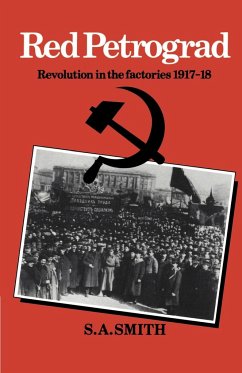This book explores the impact of the 1917 Revolution on factory life in the Russian capital. It traces the attempts of workers to take control of their working lives from the February Revolution through to June 1918, when the Bolsheviks nationalised industry. Although not primarily concerned with the political developments of the Revolution, the book demonstrates that the sphere of industrial production was a crucial arena of political as well as economic conflict. Having discussed the structure and composition of the factory workforce in Petrograd prior to 1917 and the wages and conditions of workers under the old regime, Dr Smith shows how workers saw the overthrow of the autocracy as a signal to democratise factory life and to improve their lot. After examining the creation and activities of the factory committees, he analyses the relationship of different groups of workers to the new labour movement, and assesses the extent to which it functioned democratically.
Table of contents:
Acknowledgements; introduction; 1. A profile of the Petrograd working class on the eve of 1917; 2. The tsarist factory; 3. The February revolution: a new dispensation in the factories; 4. The structure and functions of the factory committees; 5. Trade unions and the betterment of wages; 6. The theory and practice of workers' control of production; 7. Deepening economic chaos and the intensification of workers' control; 8. The social structure of the labour movement; 9. The October Revolution and the organisation of industry; 10. The economic crisis and the fate of workers' control: October 1917 to Junw 1918; Conclusion; Notes; Bibliography; Index.
This book explores the impact of the 1917 Revolution on factory life in the Russian capital. It traces the attempts of workers to take control of their working lives from the February Revolution through to June 1918, when the Bolsheviks nationalised industry. The book demonstrates that the sphere of industrial production was a crucial arena of political as well as economic conflict.
This book explores the impact of the 1917 Revolution on factory life in the Russian capital.
Table of contents:
Acknowledgements; introduction; 1. A profile of the Petrograd working class on the eve of 1917; 2. The tsarist factory; 3. The February revolution: a new dispensation in the factories; 4. The structure and functions of the factory committees; 5. Trade unions and the betterment of wages; 6. The theory and practice of workers' control of production; 7. Deepening economic chaos and the intensification of workers' control; 8. The social structure of the labour movement; 9. The October Revolution and the organisation of industry; 10. The economic crisis and the fate of workers' control: October 1917 to Junw 1918; Conclusion; Notes; Bibliography; Index.
This book explores the impact of the 1917 Revolution on factory life in the Russian capital. It traces the attempts of workers to take control of their working lives from the February Revolution through to June 1918, when the Bolsheviks nationalised industry. The book demonstrates that the sphere of industrial production was a crucial arena of political as well as economic conflict.
This book explores the impact of the 1917 Revolution on factory life in the Russian capital.








